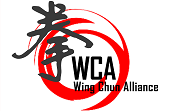
In the realm of martial arts and self-defense, Wing Chun stands out as a highly practical and effective system. Originating in southern China, Wing Chun has gained global recognition for its simplicity, efficiency, and adaptability in real-life combat situations. This article explores what makes Wing Chun a practical self-defense system, highlighting its unique principles, techniques, and training methods.
- Simplicity and Efficiency
Wing Chun’s core philosophy revolves around simplicity and efficiency. Its techniques are designed to be straightforward and direct, allowing practitioners to respond quickly and effectively to threats. Unlike some traditional martial arts that involve complex and elaborate movements, Wing Chun prioritizes minimalism and economy of motion.
- Centerline Theory
A fundamental principle of Wing Chun is the centerline theory. It emphasizes the importance of controlling the centerline, an imaginary line running vertically down the center of your body and extending towards your opponent’s center. By maintaining control of the centerline, a Wing Chun practitioner can effectively defend themselves while simultaneously attacking their opponent’s vulnerable areas.
- Economy of Motion
Wing Chun’s focus on economy of motion means that practitioners do not waste energy on unnecessary movements. Techniques are designed to be executed with minimal effort, making it possible for individuals of all sizes and physical abilities to excel in this system. This efficiency is particularly valuable in real-life self-defense situations where adrenaline can quickly deplete one’s energy.
- Close-Range Combat
Wing Chun excels in close-range combat, which is where most real-life altercations occur. Its techniques are specifically tailored for fighting in tight spaces, making it ideal for self-defense situations where you may not have the luxury of maintaining a safe distance from your assailant. Close-quarters combat is one of Wing Chun’s defining features and contributes to its practicality.
- Adaptability
Wing Chun is not a rigid system but rather one that encourages adaptability. It doesn’t rely on a fixed set of techniques but instead emphasizes principles and concepts that can be applied in various situations. This adaptability allows practitioners to adjust their techniques to suit the specific circumstances they encounter, making it a highly practical choice for self-defense.
- Minimal Contact, Maximum Efficiency
Wing Chun incorporates the concept of “sticking” or “trapping” to control an opponent’s limbs and neutralize their attacks. This minimal-contact approach allows Wing Chun practitioners to effectively immobilize their adversaries without engaging in a prolonged and potentially dangerous physical struggle. This aspect is particularly useful for self-defense, where avoiding injury is a priority.
- Rapid Training Progression
Wing Chun offers a streamlined training progression that allows students to develop practical self-defense skills relatively quickly. This accelerated learning curve is a valuable feature for individuals seeking effective self-defense methods without devoting years to training.
Conclusion
Wing Chun’s emphasis on simplicity, efficiency, adaptability, and close-range combat makes it a highly practical self-defense system. Its principles and techniques are designed to address the realities of real-life confrontations, where the ability to respond quickly and effectively can be a matter of life and death. Whether you are a martial artist looking to enhance your skills or someone seeking practical self-defense training, Wing Chun offers a valuable and effective solution that is worth exploring.
